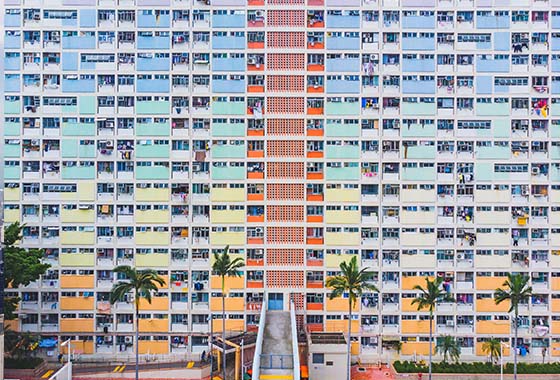Housing projections should reflect city’s harsh reality
Authors: Ryan Ip, Head of Land and Housing Research, and Koby Wong, Assistant Researcher at Our Hong Kong Foundation.
The latest Long Term Housing Strategy report is once again off the mark in its projections, because its methodology is out of touch with Hong Kong’s harsh housing reality and fails to reflect the true supply and demand picture.
Resolving Hong Kong’s land and housing problems remains one of the city’s most important priorities. An accurate projection of demand and supply is a crucial step in eventually creating enough homes for the people of Hong Kong. However, the myriad of Hong Kong’s complicated housing challenges, such as unaffordable prices and sub-divided flats, means that projections should be made with extra considerations that align with the city’s circumstances.

When the government’s Long Term Housing Strategy (LTHS) Annual Progress Report 2019 was recently released, the community was expecting some good progress, but they were left disappointed, as many figures were challenged. While it is clear to most people that Hong Kong’s housing problems are getting worse, the report’s housing supply targets were reduced once again. We believe the main problem is that the report’s methodology failed to truly reflect actual housing demand, though we believe there was no deliberate manipulation.
Current projection fails to reflect actual housing demand
The way the government projects the housing supply target is based on its projected housing demand, which includes net growth in households, households displaced by redevelopment, inadequately housed households and other factors, and the adjusted vacancy rates in the private housing market. A major cause of the lowered housing supply target was related to the fact that the projection for net increase in households was lowered by 12,300 (or 73,000 lower than the figure in 2014’s LTHS report), based on a rather problematic methodology.
Demand for living in separate households was suppressed
Decrease in household projection is often related to slowing population growth. But that is only part of the story. Between 2006 and 2016, the average number of people per household rose up 0.43 (or 16 per cent), from 2.64 to 3.07. This is because many families could not afford the rising property prices and rents, and hence were forced to have several generations cramped into a small flat. The average number of people per household was artificially inflated, and the demand for separate units was artificially suppressed, resulting in household projection being underestimated.
Since the first LTHS report published in 2014, the actual number of completed units has never met its yearly average targets. Unfortunately, the LTHS’s rolling demand projections did not take the discrepancies into consideration, as if the shortfall never existed. This suppressed demand was happening almost everywhere in Hong Kong, and yet was ignored.
Problematic methodology resulted in vicious circle
High property prices are forcing many people to live in crowded flats because they cannot afford to live in separate flats. Failing to consider this factor, the projection pointed to a demand decline, rather than increase. This made the housing shortage problem worse as demand was always underestimated, and the supply target was lowered. To rectify this problem, we believe the government should reconvene the LTHS Steering Committee to re-evaluate the LTHS’s methodologies to better reflect the reality of Hong Kong. More reasonable demand projections will provide a better foundation for the government in its quest to finding more land for housing.
As a result of the lowered overall housing supply target, the public housing target this year will be just 301,000 units. For the next ten years, the public housing production projection, according to the government, is 272,000 units. But only 82,000 units is expected to be completed in the next four years, which means 191,000 units need to be produced in the latter six years (i.e. nearly 32,000 units per year), in order to achieve the ten-year target. Such an optimistic production rate has never been achieved since 2002-03, and it is unrealistic to hope that it can be achieved this time.
Re-examining methodology the only way to find solution
The LTHS report this year offered an opportunity for the government to report some good progress about housing and land creation over the past five years, but we again saw endless stalling. We hope the government can take a hard look and see if the current projection mechanism adequately forecasts housing demand. The government needs to realise that setting realistic and achievable targets are essential steps in achieving the long-term vision that all Hong Kong people will live in reasonable homes in the future.



